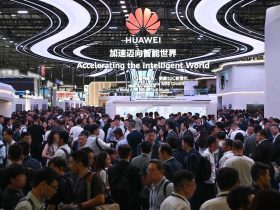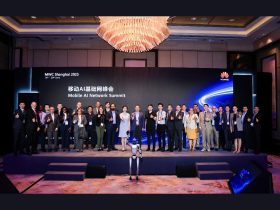In an era where artificial intelligence is transforming every aspect of our lives, staying ahead of the curve has never been more critical. Today’s briefing, “AI Dispatch: Daily Trends and Innovations,” offers an in-depth op-ed-style analysis of the most compelling AI-related stories making headlines. From Apple’s groundbreaking integration of AI in its latest iPhone 16E to Microsoft’s quantum leap with Majorana 1, NVIDIA’s pioneering Evo-2 biomolecular AI, Google’s reimagining of visual search on iOS, and CGI’s strategic advancements in data analytics, we bring you an exhaustive exploration of the innovations that are reshaping the future of technology.
This comprehensive article not only summarizes the latest news but also provides expert commentary on the implications these developments have for the AI industry at large. As we delve into each story, we will discuss how these innovations are set to redefine markets, accelerate research, and drive forward the next generation of technological breakthroughs. Whether you are an AI professional, tech enthusiast, or business leader, this briefing is your daily guide to understanding the rapidly evolving landscape of artificial intelligence and emerging technologies.
I. Apple iPhone 16E: Revolutionizing Mobile AI
A. The Evolution of Mobile AI at Apple
Apple’s commitment to innovation has once again taken center stage with the launch of the iPhone 16E, a device that integrates advanced AI capabilities into its very core. According to a detailed report in The New York Times, the new iPhone model is designed to harness the power of machine learning and artificial intelligence to deliver a more intuitive user experience. The incorporation of sophisticated neural engines and on-device AI processing not only enhances performance but also reinforces Apple’s dedication to privacy and efficiency.
Source: The New York Times
From predictive text and enhanced image processing to personalized user interfaces that adapt in real time, the iPhone 16E exemplifies the convergence of hardware and software innovation. Apple’s design philosophy has always centered on creating products that are not only aesthetically appealing but also functionally superior. With the new AI-driven features, the iPhone 16E is set to redefine mobile computing by offering functionalities that were once relegated to the realm of science fiction.
B. Key AI Innovations in the iPhone 16E
-
Enhanced Neural Engine:
The heart of the iPhone 16E’s AI prowess lies in its upgraded neural engine. This specialized processor is capable of performing trillions of operations per second, allowing for real-time image and speech recognition. With enhanced computational power, the neural engine significantly reduces latency, ensuring that AI applications run smoothly without relying heavily on cloud-based services. -
On-Device Machine Learning:
Apple’s commitment to user privacy is evident in its move towards on-device processing. By performing machine learning tasks directly on the device, the iPhone 16E minimizes data transmission to external servers, thereby enhancing security. This is particularly important in today’s landscape where data breaches and privacy concerns are rampant. The on-device approach also enables faster responses, as the AI does not need to communicate with remote servers for processing. -
Adaptive User Experience:
The iPhone 16E leverages AI to create a truly personalized experience for its users. Whether it is optimizing battery usage based on individual habits or tailoring the user interface to suit personal preferences, the device learns continuously from user interactions. This adaptive experience is not just about convenience—it represents a fundamental shift in how technology can cater to the unique needs of every individual. -
AI-Driven Camera Enhancements:
Photography has long been a key selling point for Apple devices, and the iPhone 16E is no exception. The integration of AI in the camera system allows for advanced scene recognition, dynamic range optimization, and even real-time editing suggestions. This ensures that users capture the perfect shot every time, regardless of the lighting or environmental conditions.
C. Market Impact and Industry Implications
Apple’s innovative approach to integrating AI into its flagship device is more than just a technological upgrade—it’s a paradigm shift. The move is expected to set new industry standards and prompt competitors to accelerate their own AI initiatives. In an increasingly crowded market, the emphasis on privacy, speed, and personalization gives Apple a significant competitive edge. Moreover, the seamless integration of AI across hardware and software ecosystems is likely to influence the broader trajectory of mobile computing, paving the way for smarter, more intuitive devices in the near future.
Industry experts note that Apple’s investment in AI technologies is not merely about enhancing the consumer experience; it is a strategic maneuver to fortify its position as a leader in innovation. As machine learning and AI become indispensable tools in everyday technology, the advancements seen in the iPhone 16E will likely ripple across various sectors, including healthcare, finance, and education. The implications are profound: as AI-driven devices become more ubiquitous, the potential for creating smarter cities, optimizing resource management, and even advancing scientific research grows exponentially.
D. Op-Ed Analysis and Expert Commentary
From an op-ed perspective, the launch of the iPhone 16E is emblematic of a broader trend—one where the integration of artificial intelligence into consumer electronics is no longer optional but essential. The emphasis on on-device processing is a testament to Apple’s foresight in balancing innovation with user privacy. In an age where data is both an asset and a liability, Apple’s approach signals a return to a more secure, efficient model of technological advancement.
Critics argue that the rapid pace of AI integration into everyday devices raises important questions about the ethical use of technology. However, Apple’s transparent focus on privacy and security may well serve as a blueprint for future developments in the industry. The iPhone 16E represents not just an incremental upgrade, but a fundamental reimagining of what a smartphone can do—transforming it from a mere communication device into a personalized AI companion.
As we witness the evolution of mobile AI, it becomes clear that Apple’s latest offering is more than a product launch; it is a glimpse into the future of intelligent technology. The iPhone 16E is poised to redefine user expectations and reshape the competitive landscape of the mobile industry, setting the stage for a new era of AI-powered innovation.
II. European AI Innovation: A Warning from Swedish Leadership
A. The European Innovation Dilemma
In stark contrast to the rapid advancements seen in Silicon Valley and East Asia, European leaders are increasingly vocal about the need for a renewed focus on innovation, particularly in the field of artificial intelligence. A recent CNBC report highlights a stark warning from Sweden’s Prime Minister, who cautioned that Europe risks becoming a “museum” unless it aggressively invests in AI and related technologies. This alarming statement underscores the continent’s growing concern over its competitive edge in the global technology landscape.
Source: CNBC
The Swedish Prime Minister’s remarks reflect a broader sentiment across Europe—a sense of urgency to bridge the innovation gap that has emerged in recent years. Despite Europe’s rich history of technological prowess and academic excellence, the continent has struggled to convert these advantages into groundbreaking commercial successes in AI. This disconnect poses significant challenges, especially as emerging markets and established tech giants continue to push the boundaries of what is possible in artificial intelligence.
B. Factors Contributing to Europe’s Innovation Gap
-
Conservative Investment Strategies:
One of the critical issues highlighted by European policymakers is the relatively conservative approach to investment in high-risk, high-reward technologies like AI. While American and Asian markets have seen aggressive funding and rapid scaling of AI startups, Europe’s investment climate has remained cautious. This risk-averse mindset has stifled the entrepreneurial spirit necessary for transformative innovation. -
Regulatory Hurdles:
Europe’s stringent regulatory environment, while designed to protect consumer rights and ensure data privacy, has also inadvertently created barriers to rapid innovation. Complex compliance requirements and bureaucratic delays often hinder the ability of startups to experiment and scale new technologies. Although these regulations are essential for maintaining ethical standards, they can also slow down the pace of technological advancement. -
Fragmented Ecosystem:
Unlike the more unified tech ecosystems found in the United States and China, Europe is characterized by a fragmented market with diverse languages, cultures, and regulatory frameworks. This fragmentation poses challenges in creating scalable solutions that can operate seamlessly across borders. The lack of a cohesive digital infrastructure further complicates efforts to achieve breakthrough innovations in AI. -
Talent Migration:
Europe has long been home to some of the world’s top research institutions and tech talent. However, the allure of better opportunities abroad has led to a significant brain drain, with many skilled professionals migrating to regions that offer more robust support for tech innovation. Reversing this trend requires strategic investments in education, research, and local industry partnerships.
C. The Call to Action for European Innovators
The Swedish Prime Minister’s warning serves as a rallying cry for European governments, academic institutions, and private enterprises to double down on their efforts in AI. To avoid stagnation, there is an urgent need to:
-
Increase R&D Investment:
Governments and private investors must commit to significantly ramping up funding for AI research and development. Public-private partnerships can play a pivotal role in fostering an environment where innovation thrives. -
Streamline Regulatory Processes:
While regulations are necessary for ensuring ethical and safe practices, there is room for reform to create a more agile regulatory framework that supports rapid technological advancements without compromising on security and privacy. -
Encourage Cross-Border Collaboration:
Building a unified digital ecosystem across Europe can help overcome the challenges of fragmentation. By promoting collaboration between different countries and regions, Europe can leverage its collective strengths to compete on the global stage. -
Retain and Attract Talent:
Initiatives aimed at retaining local talent and attracting skilled professionals from around the world are critical. This could involve creating innovation hubs, offering competitive incentives, and developing world-class research facilities that position Europe as a leader in AI innovation.
D. Op-Ed Reflections on Europe’s AI Future
From an op-ed standpoint, the narrative emerging from Europe is one of both caution and opportunity. The warning from Sweden’s Prime Minister is not just a critique—it is a call to arms for a continent that has the potential to reclaim its status as a global leader in innovation. The challenges are formidable, but so are the opportunities. European policymakers and industry leaders must harness the region’s unique strengths—its rich academic heritage, diverse talent pool, and strong emphasis on ethics—to create an AI ecosystem that is both competitive and sustainable.
The future of European AI hinges on its ability to adapt to the rapidly evolving global landscape. With concerted effort and strategic investment, Europe can transform from a cautionary tale into a beacon of innovation. However, failure to act decisively may indeed consign the continent to a future where its past glories become relics in a museum of missed opportunities.
As we reflect on Europe’s current state of AI innovation, it becomes clear that the path forward requires bold leadership, agile policies, and a willingness to embrace risk in the pursuit of groundbreaking advancements. The message from Sweden is unequivocal: the time to innovate is now, and the consequences of inaction could be dire.
III. Microsoft’s Majorana 1: A Quantum Leap in AI Computing
A. Unveiling the Future of Quantum Processing
Microsoft has long been at the forefront of technological innovation, and its latest breakthrough—Majorana 1—marks a significant milestone in the evolution of quantum computing. Detailed in a recent post on the Microsoft Azure Blog, Majorana 1 is heralded as the world’s first quantum processor powered by topological qubits. This revolutionary technology promises to accelerate AI research by offering unprecedented computational power, opening new avenues for solving complex problems that were previously beyond reach.
Source: Microsoft Azure Blog
Quantum computing represents a paradigm shift in processing capabilities. Traditional computers, which rely on binary logic, are limited in their ability to handle vast amounts of data and intricate computations. In contrast, quantum processors leverage the principles of quantum mechanics, allowing them to perform multiple calculations simultaneously. The integration of topological qubits in Majorana 1 further enhances the system’s stability and error resistance, making it a robust platform for advanced AI applications.
B. The Science Behind Majorana 1
-
Topological Qubits:
At the core of Majorana 1 are topological qubits, which differ significantly from conventional qubits. Their unique properties allow them to be more resilient to environmental noise and errors, a persistent challenge in quantum computing. This stability is crucial for running long and complex computations, which are essential for training large-scale AI models. -
Quantum Superposition and Entanglement:
Leveraging the principles of quantum superposition and entanglement, Majorana 1 can process a multitude of possibilities simultaneously. This capability dramatically reduces the time required for computations that, on classical computers, would take years. Such speed is particularly valuable in AI research, where training sophisticated algorithms demands immense processing power. -
Implications for AI Research:
The computational advantages provided by Majorana 1 have profound implications for the field of artificial intelligence. Complex tasks such as natural language processing, drug discovery, and predictive analytics could be revolutionized by the enhanced processing capabilities of quantum systems. Researchers can now explore deeper neural networks and more intricate models, pushing the boundaries of what AI can achieve.
C. Industry Impact and Strategic Implications
Microsoft’s announcement of Majorana 1 is more than just a technical milestone—it represents a strategic investment in the future of AI. The convergence of quantum computing and artificial intelligence is poised to unlock new levels of innovation across various industries. For businesses, the ability to leverage quantum-powered AI could translate into more efficient data analysis, optimized logistics, enhanced cybersecurity, and accelerated research and development.
The potential applications of quantum AI extend far beyond conventional computing. Industries such as finance, healthcare, and logistics stand to benefit from breakthroughs that enable more accurate modeling, faster decision-making, and even entirely new ways of solving long-standing problems. Microsoft’s leadership in this arena signals its commitment to pushing the technological envelope and positioning itself at the forefront of the quantum revolution.
D. Op-Ed Perspective: A Glimpse into Tomorrow
In an op-ed analysis, Majorana 1 is not just a product—it is a harbinger of a new era in computing. The fusion of quantum mechanics with AI is likely to disrupt traditional paradigms, offering solutions to challenges that have long been considered intractable. Critics may caution that quantum computing is still in its infancy, but the progress demonstrated by Microsoft underscores a vital truth: the future of AI lies in harnessing the extraordinary potential of quantum technologies.
The unveiling of Majorana 1 invites us to reimagine the possibilities of machine learning and data processing. It challenges the conventional limitations of classical computing and opens up a landscape where the most complex problems can be tackled with unprecedented speed and accuracy. As quantum processors become more integrated into AI research, we can expect a transformative impact on both scientific discovery and commercial innovation.
IV. NVIDIA’s Evo-2 Biomolecular AI: Bridging Biology and Machine Learning
A. A New Frontier in AI-Driven Biomolecular Research
In a bold move that underscores the convergence of life sciences and artificial intelligence, NVIDIA has introduced Evo-2, a breakthrough in biomolecular AI. The NVIDIA Blog describes Evo-2 as a cutting-edge platform that leverages advanced machine learning techniques to analyze and interpret complex biological data. This innovation has the potential to revolutionize fields such as genomics, drug discovery, and personalized medicine.
Source: NVIDIA Blog
Evo-2 represents a significant step forward in integrating AI with the biological sciences. By harnessing the power of machine learning, the platform is capable of identifying patterns in biomolecular data that were previously hidden from traditional analysis methods. This not only accelerates research but also opens up new possibilities for developing targeted therapies and advancing our understanding of biological processes at the molecular level.
B. Technical Innovations Behind Evo-2
-
Deep Learning for Molecular Analysis:
Evo-2 employs sophisticated deep learning algorithms to analyze vast datasets of biological information. These algorithms are designed to recognize subtle patterns in the structure and behavior of biomolecules, enabling researchers to predict interactions, mutations, and other critical phenomena with remarkable accuracy. -
Integration with High-Performance Computing:
NVIDIA’s Evo-2 takes full advantage of its expertise in high-performance computing. By combining powerful GPUs with optimized machine learning frameworks, the platform can process enormous datasets in real time. This capability is crucial for applications in drug discovery, where the speed and accuracy of data analysis can directly impact the development of new treatments. -
Real-World Applications:
The practical applications of Evo-2 are extensive. In pharmaceutical research, for example, the platform can streamline the process of identifying promising drug candidates by rapidly simulating molecular interactions. In genomics, it can aid in mapping genetic variations and understanding their implications for disease susceptibility and treatment outcomes.
C. Implications for Healthcare and Beyond
The advent of Evo-2 is set to have far-reaching implications beyond academic research. In the competitive landscape of biotechnology and healthcare, the ability to quickly and accurately interpret biomolecular data is a game changer. It not only accelerates the pace of discovery but also reduces the cost and time associated with traditional research methods.
For patients, the promise of biomolecular AI is particularly exciting. Personalized medicine—tailoring treatments to individual genetic profiles—has long been a goal of healthcare, and Evo-2 brings this vision closer to reality. By unlocking deeper insights into the molecular underpinnings of diseases, AI-driven platforms can lead to more effective, individualized therapies and improved patient outcomes.
D. Industry Reflections and Forward-Looking Commentary
From an op-ed perspective, NVIDIA’s Evo-2 represents a pioneering fusion of biology and artificial intelligence. It challenges the conventional boundaries of both fields and highlights the transformative potential of cross-disciplinary innovation. As the healthcare industry grapples with complex challenges such as rising costs and the need for faster drug development, the integration of AI into biomolecular research could herald a new era of medical breakthroughs.
Critics may question the scalability of such advanced platforms or the readiness of traditional research institutions to adopt them. However, the momentum behind Evo-2 suggests that we are witnessing the early stages of a profound shift—one that will redefine how we approach medicine and life sciences in the coming decades.
V. Google Lens on iOS: Redefining Visual Search Through AI
A. The Transformation of Visual Search
Google continues to push the boundaries of artificial intelligence with its latest innovation: the integration of Google Lens on iOS. According to a recent post on the Google Blog, the new update brings advanced AI-driven visual search capabilities to iOS users, enabling them to seamlessly identify objects, translate text, and even make informed purchasing decisions simply by pointing their devices at the world around them.
Source: Google Blog
The integration of Google Lens on iOS marks a significant evolution in how users interact with technology. By leveraging state-of-the-art computer vision and deep learning algorithms, Google Lens transforms everyday interactions into opportunities for discovery and learning. The technology not only enhances the user experience but also represents a broader shift toward more intuitive, context-aware interfaces.
B. Key Features and Technological Advances
-
Enhanced Object Recognition:
With its upgraded AI algorithms, Google Lens now offers more accurate and faster object recognition. Whether it’s identifying landmarks, products, or even artworks, the technology provides detailed information in real time. This advancement opens up new possibilities for both personal use and commercial applications. -
Seamless Integration on iOS:
The latest update is optimized for iOS, ensuring that the user experience is smooth and consistent across devices. This integration leverages the native capabilities of Apple hardware while incorporating Google’s powerful AI, thereby creating a hybrid model of innovation that benefits from the strengths of both ecosystems. -
Contextual and Personalized Responses:
One of the most exciting features of the updated Google Lens is its ability to provide contextually relevant results. By analyzing the surrounding environment and user behavior, the tool can deliver personalized recommendations and insights that go beyond simple object identification.
C. Market Impact and Consumer Benefits
The introduction of Google Lens on iOS has far-reaching implications for both consumers and businesses. For users, the technology simplifies everyday tasks—ranging from quickly finding product reviews to navigating unfamiliar environments. For businesses, it opens up new channels for customer engagement and targeted marketing. The ability to merge physical and digital experiences seamlessly is likely to drive significant advancements in retail, education, and even tourism.
D. Expert Analysis and Future Prospects
In an op-ed analysis, the evolution of Google Lens on iOS is a testament to the transformative power of AI in reshaping how we interact with the world. The integration of visual search technology into everyday devices is not merely a convenience—it represents a fundamental shift in information access. As AI continues to improve, we can expect further innovations that will make our interactions with technology more natural, intuitive, and personalized.
The future of visual search is bright, and Google’s efforts serve as a harbinger for a world where the boundaries between the digital and physical realms are increasingly blurred. The implications for education, commerce, and daily life are immense, and the continued evolution of such technologies will undoubtedly spur further innovations that enhance our understanding of the world.
VI. CGI’s Strategic Milestone: Strengthening AI and Data Analytics Capabilities
A. CGI’s New Designation: A Strategic Victory
In another significant development within the AI landscape, CGI has achieved a new designation that underscores its enhanced capabilities in AI and data analytics. As reported by PR Newswire, this milestone—attained through a strategic partnership with Databricks—positions CGI as a leader in leveraging big data and machine learning to drive business insights and operational efficiency.
Source: PR Newswire
CGI’s achievement is a clear signal that traditional IT service providers are evolving rapidly to meet the demands of a data-driven economy. By incorporating advanced AI and data analytics into its service portfolio, CGI is not only expanding its market reach but also setting new benchmarks for performance and innovation in the IT sector.
B. The Strategic Importance of AI and Data Analytics
-
Data-Driven Decision Making:
In today’s digital economy, data is one of the most valuable assets. CGI’s enhanced capabilities in data analytics enable businesses to make more informed, strategic decisions by uncovering hidden patterns and insights from massive datasets. This data-driven approach is essential for optimizing operations, reducing costs, and driving innovation. -
Operational Efficiency and Customer Engagement:
By integrating AI-powered analytics into its services, CGI is able to offer solutions that enhance operational efficiency. Predictive analytics, real-time monitoring, and automated reporting are just a few examples of how AI can streamline business processes. Moreover, these technologies empower companies to engage with their customers in more meaningful and personalized ways. -
Competitive Differentiation:
The new designation is not just an operational milestone—it also represents a strategic differentiator for CGI in a crowded market. As companies increasingly look to technology partners who can offer comprehensive, AI-driven insights, CGI’s advanced capabilities set it apart from competitors.
C. Industry Perspectives and Future Outlook
The strategic moves by CGI highlight a broader trend within the IT and services industry: the growing convergence of AI, data analytics, and traditional business operations. As companies seek to navigate an increasingly complex digital landscape, the ability to harness data effectively is emerging as a critical success factor. CGI’s latest achievement is a testament to the transformative power of AI in driving business innovation and efficiency.
D. Op-Ed Insights: Charting a New Course in Data Analytics
From an op-ed perspective, CGI’s strategic milestone is a beacon for companies looking to integrate AI into their operational fabric. The future of business is undeniably data-driven, and the organizations that can successfully leverage advanced analytics will be the ones that lead the charge. CGI’s enhanced capabilities not only signal its readiness to embrace this future but also challenge other industry players to elevate their game in the realm of AI and data analytics.
The implications of this development are profound. As industries across the board—from healthcare to finance—seek to harness the power of big data, strategic partnerships like the one between CGI and Databricks will become increasingly common. This is a clear indication that the future of AI is not confined to isolated tech startups but is rapidly becoming an integral part of the broader business ecosystem.
VII. Industry Trends and Future Outlook in AI
A. Convergence of Technologies and Cross-Disciplinary Innovation
The news stories covered today underscore a critical trend: the convergence of artificial intelligence with other cutting-edge technologies is driving a new wave of innovation. Whether it’s Apple’s integration of advanced AI in mobile devices, Microsoft’s quantum leap with Majorana 1, or NVIDIA’s pioneering work in biomolecular AI, the common denominator is clear—innovation is increasingly about crossing traditional boundaries to create synergistic solutions.
This convergence is particularly evident in how AI is being integrated into domains that were once considered distinct from the tech industry. For example, Google’s advancements in visual search are redefining retail and education, while CGI’s enhanced data analytics capabilities are transforming business operations. Such cross-disciplinary innovations are not only creating new market opportunities but are also setting the stage for a more interconnected digital ecosystem.
B. The Global Race for AI Leadership
A recurring theme in today’s briefing is the global competition to lead in AI innovation. While American and Asian tech giants continue to push the envelope, Europe’s cautionary stance, as articulated by Swedish leadership, serves as a stark reminder that innovation requires bold investments and risk-taking. The race for AI supremacy is not just about technological prowess; it is also about strategic vision, regulatory agility, and the ability to attract and retain top talent.
The competitive dynamics in this space are reshaping geopolitical relationships, with nations vying for dominance in an arena that will define the future of work, security, and economic growth. The next few years will be critical as countries and companies alike strive to harness AI for national and corporate advancement. The integration of quantum computing, biomolecular research, and advanced data analytics is not merely a series of isolated events—it is part of a broader strategy to create a future where artificial intelligence is a driving force behind global progress.
C. Ethical Considerations and the Responsible AI Paradigm
With great power comes great responsibility. As AI technologies become more pervasive and powerful, ethical considerations must take center stage. Issues such as data privacy, algorithmic bias, and the societal impact of automation are increasingly important. The news from Apple, Microsoft, and others not only highlight technological breakthroughs but also raise critical questions about how these innovations will be governed.
The call for responsible AI is growing louder, with policymakers, industry leaders, and the public demanding greater transparency and accountability. Striking the right balance between innovation and ethical responsibility is perhaps the greatest challenge—and opportunity—of our time. As we look to the future, it is imperative that AI development is guided by principles that prioritize human well-being, fairness, and inclusivity.
D. Future Opportunities and Strategic Imperatives
The innovations discussed in today’s briefing represent just the tip of the iceberg. Looking forward, the strategic imperatives for companies in the AI space include:
-
Investing in R&D:
Continuous investment in research and development is essential for sustaining momentum in AI innovation. Companies that can maintain a robust R&D pipeline will be best positioned to capitalize on emerging opportunities. -
Fostering Cross-Industry Collaboration:
The convergence of different technologies necessitates collaboration across disciplines. Strategic partnerships, such as those seen with CGI and Databricks, will be crucial in driving breakthroughs that transcend traditional industry boundaries. -
Scaling Ethical AI Practices:
As AI becomes more integrated into daily life, developing robust ethical frameworks and ensuring transparency will be paramount. This is not just a moral imperative—it is a strategic one, as public trust in AI will drive its adoption and success. -
Embracing Agility and Adaptability:
In a rapidly evolving digital landscape, agility is key. Companies and governments alike must be willing to adapt to new challenges and seize opportunities as they arise, ensuring that they remain at the forefront of innovation.
E. Op-Ed Synthesis: A Glimpse into the AI-Powered Future
From an op-ed perspective, the future of AI is both exhilarating and challenging. The breakthroughs we are witnessing today—across mobile technology, quantum computing, biomolecular research, and data analytics—are laying the groundwork for a future that promises to be more intelligent, efficient, and interconnected than ever before. However, this future also comes with significant responsibilities. As we push the boundaries of what is possible, we must remain vigilant about the ethical implications and societal impacts of these technologies.
The innovations of today are the building blocks of tomorrow’s digital ecosystem. They challenge us to rethink established paradigms, reimagine business models, and ultimately, redefine what it means to be human in an increasingly digital world. The AI revolution is not a distant dream—it is happening now, and its effects will be felt across every sector of society.
VIII. Conclusion: Embracing the AI Revolution
As we conclude today’s briefing, it is clear that the landscape of artificial intelligence is undergoing rapid and transformative change. The news from Apple, Microsoft, NVIDIA, Google, and CGI serves as a vivid reminder that the future of AI is being written today. Each innovation, whether it is the AI-driven iPhone 16E, the quantum breakthroughs of Majorana 1, the biomolecular insights from Evo-2, the enhanced visual search capabilities of Google Lens on iOS, or the strategic advancements in data analytics by CGI, contributes to a broader narrative of progress and disruption.
The AI revolution is characterized by convergence—where multiple technologies, disciplines, and industries intersect to create solutions that are greater than the sum of their parts. It is a future defined not only by technological prowess but also by strategic vision, ethical responsibility, and the relentless pursuit of innovation. As we navigate this exciting yet challenging landscape, the insights and analyses presented in this briefing offer a roadmap for understanding the trends that will shape the future of technology and society.
For businesses, policymakers, and innovators, the message is unequivocal: the time to invest in and embrace AI is now. The innovations we see today are not merely incremental improvements; they are transformative forces that will redefine the boundaries of possibility. In this dynamic environment, those who adapt and innovate will lead the charge into a future where artificial intelligence is not just a tool but a cornerstone of human progress.
As we look ahead, the road is filled with both opportunities and challenges. The need for ethical guidelines, strategic investments, and collaborative efforts has never been greater. The AI revolution promises a future of unparalleled innovation—one that holds the potential to improve lives, drive economic growth, and create a more interconnected, intelligent world. The journey has just begun, and the next chapter in the story of artificial intelligence is being written by the innovators, leaders, and visionaries of our time.
In closing, today’s trends and breakthroughs serve as a powerful reminder of the transformative impact of AI. They challenge us to think bigger, act bolder, and work together to build a future where technology and humanity advance in harmony. The revolution is here, and it is up to us to shape it with wisdom, creativity, and a steadfast commitment to a better tomorrow.


















Got a Questions?
Find us on Socials or Contact us and we’ll get back to you as soon as possible.